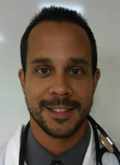
I stepped off the plane into the daylight, bleary-eyed from lack of sleep and an ineffective sleeping pill. The line at immigration stretched down the airport, overflowing with people and excitement.
“How long will you be in Ireland?” the immigration officer asked me.
“Same as everyone else here,” I replied, gesturing with my head to the line behind me.
“I won’t keep you then. Enjoy the game.”
At no other time or place would that answer have sufficed, but I was one of 45,000 Americans descending on Dublin, part of the largest single movement of Americans into Europe since World War II. We were moved not by war but by a Notre Dame football game.
Despite my Italian name, my ancestors, like those of the Notre Dame faithful, emigrated from Ireland during the Great Famine of the 1840s. I’ve seen pictures of the ports of New York City during the famine, as waves of Irish poured off of boats onto American soil. This line into Dublin looks similar except the Americans in line today are not escaping a famine; in fact, most are overweight and have wallets filled with cash. The Irish welcome the Americans with open arms, in contrast to the way the citizens of antebellum United States hurled insults and occasionally rocks at the Irish hoards as they came off the docks. Differences aside, the slow progression through immigration and customs and onto public buses felt like a mass migration, a reversal of the path our ancestors had taken 165 years earlier.
Dublin, meaning the “black pool” in Irish, is a classic European city filled with beautiful architecture, a rich history and narrow, uneven streets. My college buddies and I came from all over the globe for the game: New York, San Francisco, London and Rwanda. We took in some of the typical tourist draws but this was mostly a social visit, so we spent our time in restaurants and pubs, getting to know Ireland through the eyes of the Irish.
The real attraction of Dublin, though, is the Irish themselves and their exceptionally outgoing demeanor. At one point I must have looked lost because a man offered me directions unprovoked. Another two strangers joined us on the sidewalk for an impromptu gathering about what was the best way for me to arrive at my destination.
Even back with the group of 10 boisterous men, we were obviously, obnoxiously American, and the Irish still loved us. Complete strangers would stop us on the street to have a chat, and in the pubs they were even friendlier. Dublin is small, and by the end of four days, I ran into groups of Irish I had already met on another night in a different part of town.
Their friendliness is only enhanced by their brogues as they ask, “Where you lads from then? Here for the American football match, are ye? Best o’ luck to ye.”
The Irish have a fierce nationalism not seen anywhere else in Europe, probably because of their more recent, and some would say ongoing, colonization by the English. The history is violent and intertwined and many of the Irish still truly hate the English. It has been 90 years since Ireland gained its independence, but Northern Ireland still belongs to the United Kingdom.
“We shot many Brits back in the day, although we didn’t win our independence like you Yankees did,” a cab driver boasted as we drove to the stadium, a topic we hadn’t brought up but that he felt comfortable offering. “Everywhere in the British Empire has its freedom now except for us,” he later lamented. We wished him luck in his fight for independence, and hopped out of the taxi a half mile from the stadium.
Since the Good Friday Agreement, I hadn’t thought much about it, but it did strike me as odd that Uganda, South Africa and India govern themselves, Canada and Australia have a formal, consensual relationship with the Queen, but part of the Emerald Isle is still under British rule. Many generations have tried to solve the situation in differing ways, but at least the violence has ceased.
At this point in the weekend, with all that we’d seen and done, the game was almost an afterthought. Almost. The road was filled with people walking toward the stadium, sporting every type of U.S. football jersey that Dublin had: NFL jerseys, some of long-dead players, college jerseys, and jerseys of amateur Irish teams that played American football. If you had an American football jersey in Dublin, that was the day to wear it.
The stadium itself was beautiful, a modern semi-dome that looked like a spaceship from the outside. Usually used for rugby and soccer, the 51,700 seat stadium accommodated the American invasion and a few thousand native Irish.
Four quarters, three Guinness and two hot dogs later, I cheered as the Fighting Irish pounded Navy 50-10. The stadium crowd poured out into the streets, filling the pubs and restaurants in that neighborhood. We hopped to several different places, making new friends along the way.
They say it will be only four years before Notre Dame returns to Dublin, instead of the 16 years since the last visit, but whenever it is, I’ll be there.
Vincent DeGennaro is an internal medicine doctor and a global public health specialist in the Department of Global Health and Social Medicine, Harvard Medical School. He also works with the international nonprofit organization Partners in Health. See his An American Doctor in Rwanda blogs.